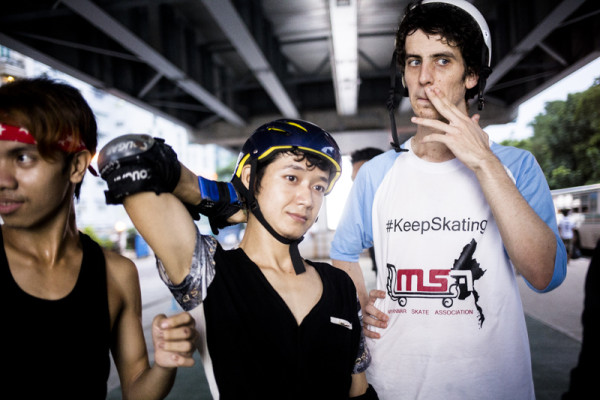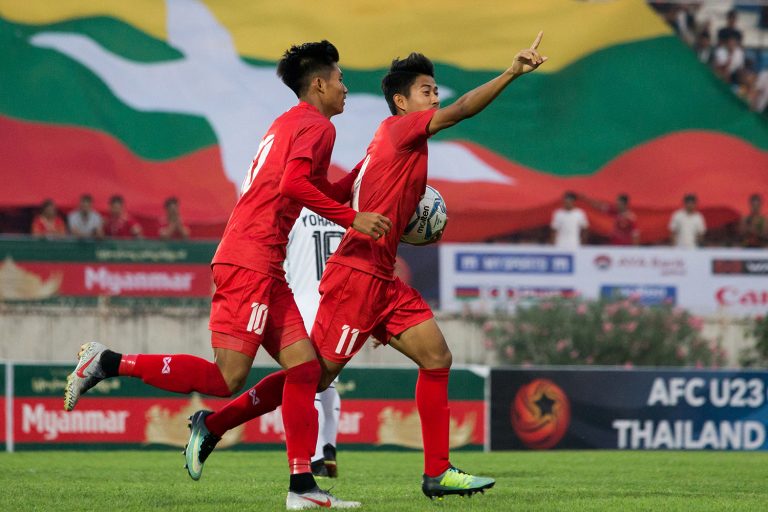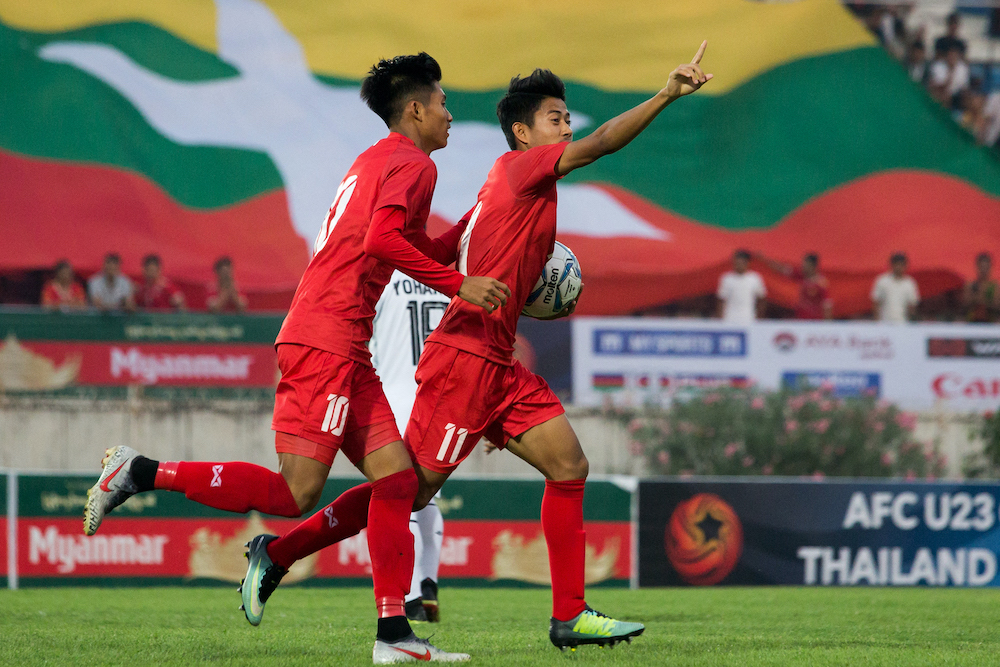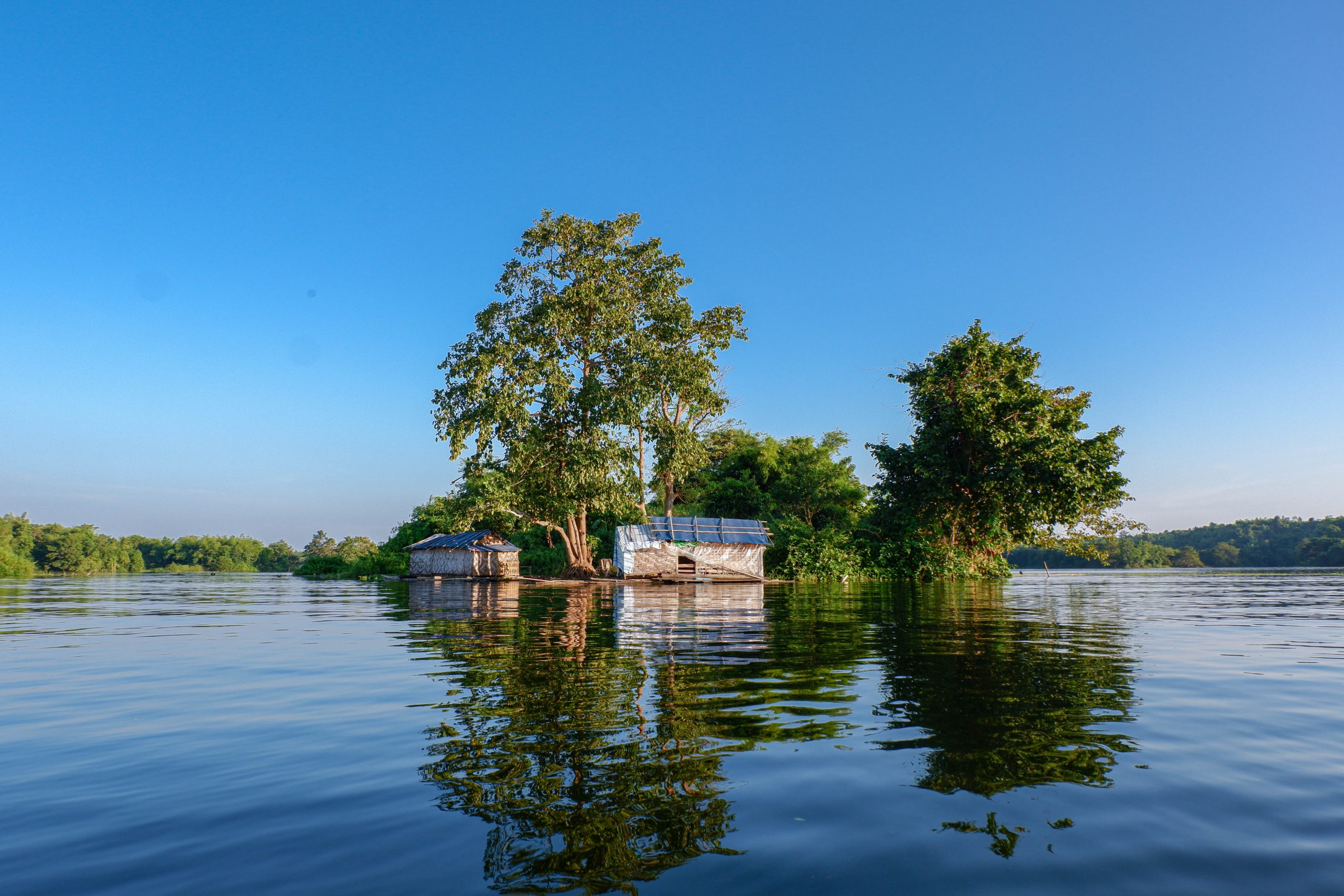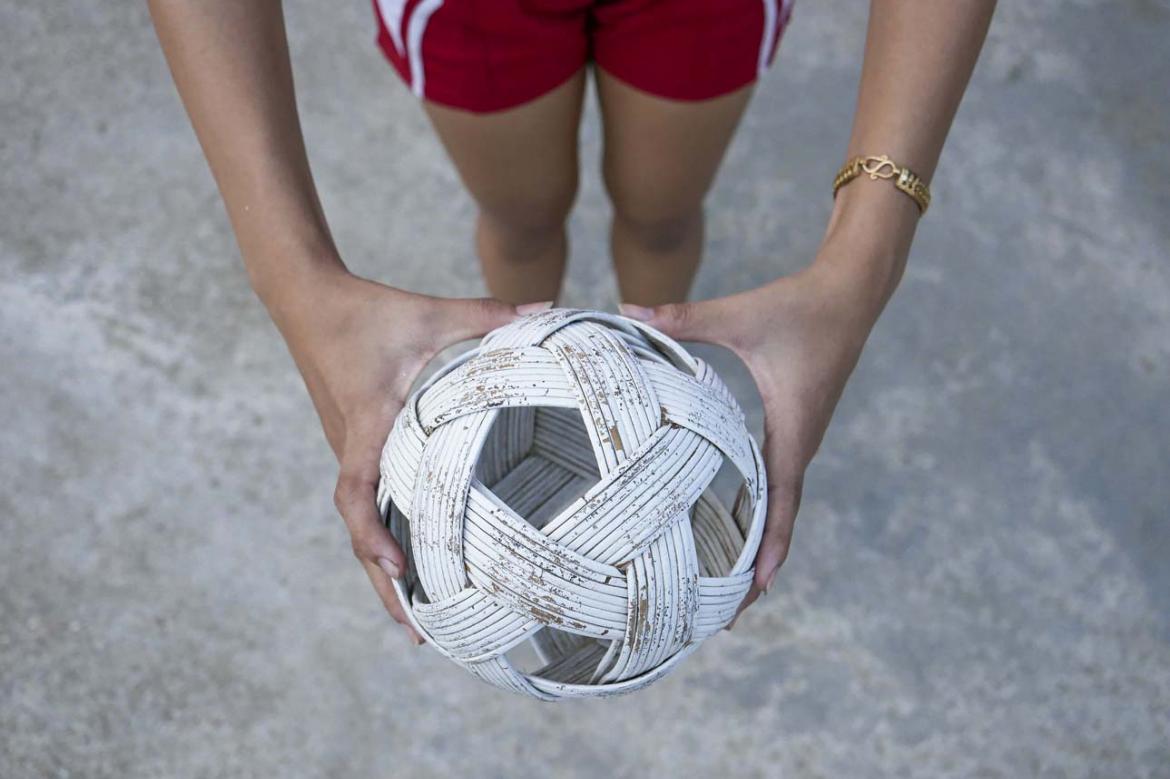
Dave Payne. (Ann Wang / Frontier)
On a Tuesday afternoon under the overpass at Yangon’s Hledan Junction, a handful of kids with rollerblades and skateboards are practicing tricks on a few scuffed metal ramps covered in old graffiti.
In the Myanmar skating world, this spot is known simply as “the Bridge.” The skaters are practising for Malaysia’s Perak X-Games this month and have spent several months carefully replicating the official arena as closely as a scrap of public infrastructure will allow, down to the green enamel painted on the concrete pavement.
Dave Payne, a thin, 20-something Australian watches the action, occasionally calling out advice in fluent Myanmar. “It’s our own little shanty skate park, but it’s the skating hub of Myanmar,” he says. “People come from all over the country to skate here.”
As a skating coach, Payne’s story could be from of a Hollywood movie: A young extreme sports junkie hangs up his rollerblades and travels to Myanmar, only to fall in with a rag-tag group of skaters in third-hand gear. Three years later, their Myanmar Skate Association has about 700 members and holds yearly competitions, the last one sponsored by Hansaplast and CB Bank. Now those kids from under the bridge are heading overseas. It will be the first time Myanmar skaters compete at international level. For most of them, it will be their first overseas trip.
The only piece left is an against-all-odds victory.
Skating from scratch
Whatever happens at the X-Games, MSA co-founder and president Ko Lwin is just happy to see skating become a real sport – even one with its headquarters under a public highway.
Ko Lwin started skating when he was 10, practising in the streets around the old royal palace in Mandalay, his home city. He says while the rest of the world was buzzing about [former American professional skateboarder and actor] Tony Hawk in the 2000s, he and his friends were breaking flimsy Chinese rollerblades and making their own skateboards from wood planks. Global skate culture came to Myanmar in a slow trickle, and the skaters had to develop their own moves and lingo from the ground up.
“Even though we practised the tricks, we didn’t know what to call the tricks. After Dave came, he elaborated and explained the trick names.”
Payne has played a supportive role for many of Myanmar’s top skaters. Some say they got serious about skating when they first saw Payne pull aggressive vertical moves on the half pipe, or when he gave them their first pair of high quality skates.
“I was the only one who could really provide skates before,” Payne says. “For the past three years, the only way people bought skates was through me bringing them in my suitcase. I used to have crazy fines, like $400 fines for overweight bags.”

Myanmar Skate Association. (Ann Wang / Frontier)
These days, the weekly Friday skate night at the Bridge attracts about 100 people, with or without Payne. The MSA has official logos, gear and sub teams by city and township, and members pool their resources to provide newcomers with high-quality equipment.
“They are like family. They would do anything for one another,” Ko Lwin says. “They quit smoking because of the competition. They quit alcohol because of skating. This is the profit … Skating is developing the youth culture in Myanmar.”
Much of this was the work of Ko Lwin, now in his 30s and running a printing company in Mandalay. He no longer competes (“I am too fat,” he says), but he calls himself a “skate developer”. As Payne trains and mentors new skaters, Ko Lwin negotiates with sponsors, organises competitions and coordinates social work, including a training program with the Mary Chapman School for the Deaf that led to one of its students appearing on ‘Myanmar’s Got Talent’.

Myanmar Skate Association.(Ann Wang / Frontier)
DIY adrenaline
Ye Zaw, one of the Malaysia-bound contenders practising at the Bridge, laments the lack of a wide, angled rail feature. “We worry about the Malaysia competition because in Malaysia they have all this equipment and gear that we don’t have here,” he says. “How are we going to practise?”
So far, the city authorities have been indifferent to the ever more elaborate Hledan Junction site.
Ko Lwin is glad the government hasn’t given skaters any trouble but says it could do more to encourage the sport. “We need support, full or partial support from the government. We need a skate park with the right dimensions,” he says.
Myanmar saw a boom in skate parks run by the private sector, but it was short-lived. Ko Lwin says that between 2010 and 2013, Mandalay Region went from basically no skate parks to almost 100, but most were started by entrepreneurs who had never skated.
“It was like a fire lit, and the fire was pushed down,” says Ko Lwin. “The land prices were skyrocketing, so the skate parks closed down.”
The only remaining skate park in Mandalay is Champion Skateland, a semi-indoor facility with a snack bar, rental skates and plastic matted floors. But its ramps aren’t official regulation and it serves as more of a casual roller rink than a technical terrain park.
The best place for hard core training is Yangon, where the half pipe, ramps and rails are maintained by the community that uses them. Although this year’s MSA championship – for which CB Bank provided thousands of dollars in prizes, food, sound equipment and a DJ – was held at a separate location, the skaters had to transplant the ramps and rails from under the Bridge.

Myanmar Skate Association.(Ann Wang / Frontier)
The Underdogs
But even under a bridge, the underdog status of Myanmar skaters might be their best edge.
Poe Thar, 20, placed last at his first competition only to become the defending champion a year later. His family and community were uneasy about the sport until they saw the way he focused and trained – and the prizes he was bringing home.
Myanmar’s skaters learn skating the hard way, and together. Payne says welding their own ramps and pooling their money for airfares has given them a special kind of commitment – to the sport and one another.
“They’re so much more focused than I was when I was at their skating level,” says Payne. “I look at these guys and go, ‘Everyone has a shot.’ They all have the right spirit, the right heart, the right training.”
Maybe the Hollywood victory isn’t against-all-odds after all.


